Don't like homeless folks' stuff strewn on streets? This deal works for everyone
Other cities across the United States and Canada are taking note
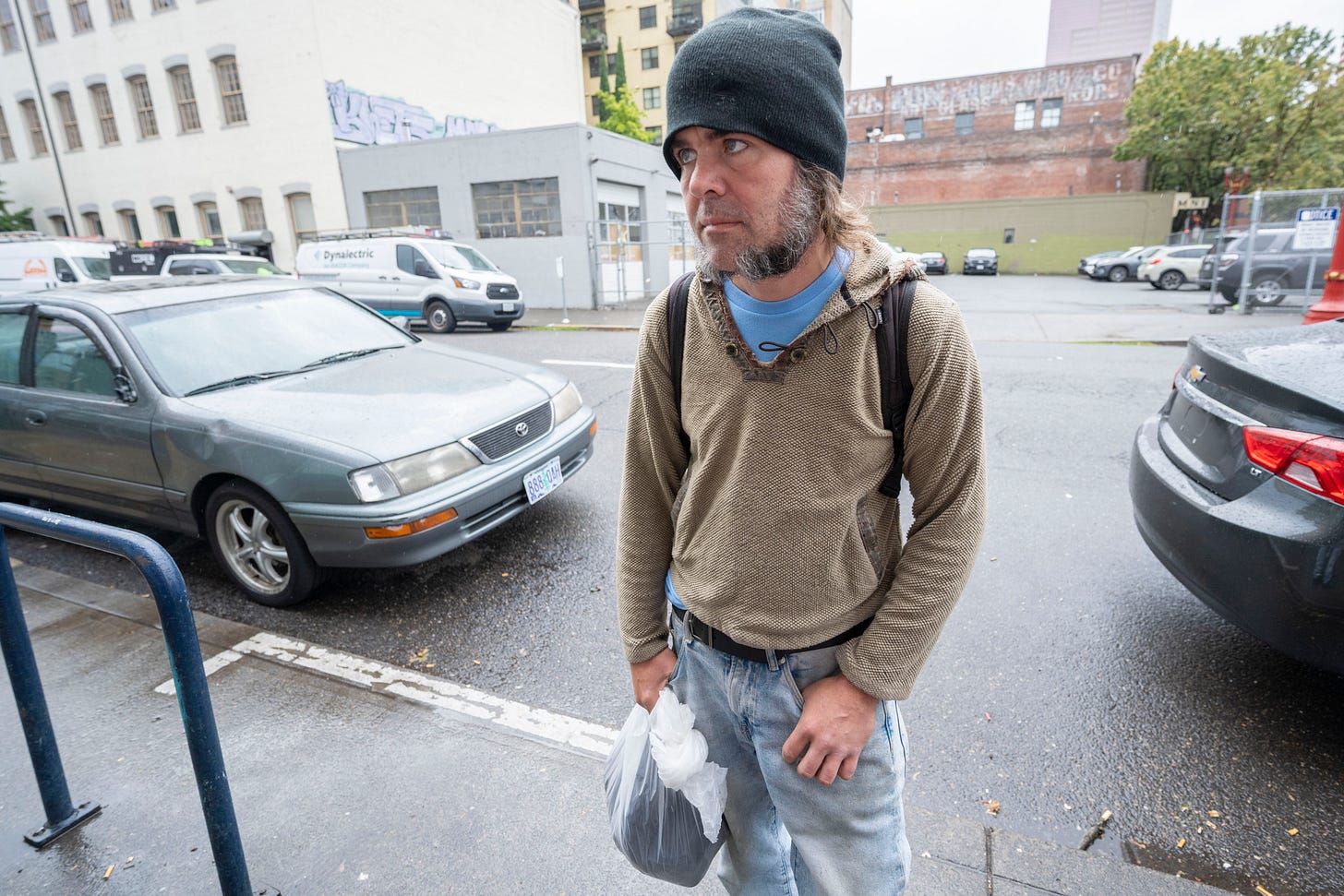
Donny Collins has been homeless since he arrived in Portland six months ago. He needed a job and a place to live. But first he needed a place to store his belongings. Then he discovered Portland Day Storage. Without this place, Donny says, “I’d be out of luck.” He added, “I am grateful for it…’cause otherwise I’d be lugging around 30 pounds, and it would get stolen.”
What’s in his bin? “It’s mainly clothes. I can’t really afford to be losing clothes right now, because I only have like three pairs of pants and a handful of shirts.”
So what exactly is Portland Day Storage? It’s a unique facility at 435 NW Glisan St. that offers a modest amount of storage to homeless folks who otherwise would have no place to store their limited number of personal belongings. The city of Portland contracts with Central City Concern to run the operation.
The Day Storage facility includes 490 storage bins — both 32-gallon plastic drums and 27-gallon tubs — which customers can access from 7 a.m. to 8 p.m. up to three times every day. The storage area is locked and staffers bring customers’ bins out to a waiting area, where each person is allowed up to 15 minutes at a time to deposit or retrieve his or her belongings. No weapons, food or drugs are allowed. Anything left unclaimed after 30 days is discarded. The place is now at full capacity, with a waiting list growing by the day.
Think this is a good idea? Other cities are taking note. The people who run the Day Storage facility say they have been getting inquiries from city officials across the U.S. and Canada, all of them cities with homeless challenges — looking to replicate Portland’s successful program.
Portland’s first day storage facility of its kind opened in 2016 under the Steel Bridge. It served a critical need but offered inadequate space to serve Portland’s even-then growing homeless population. That facility was closed and the current one opened in December 2023.
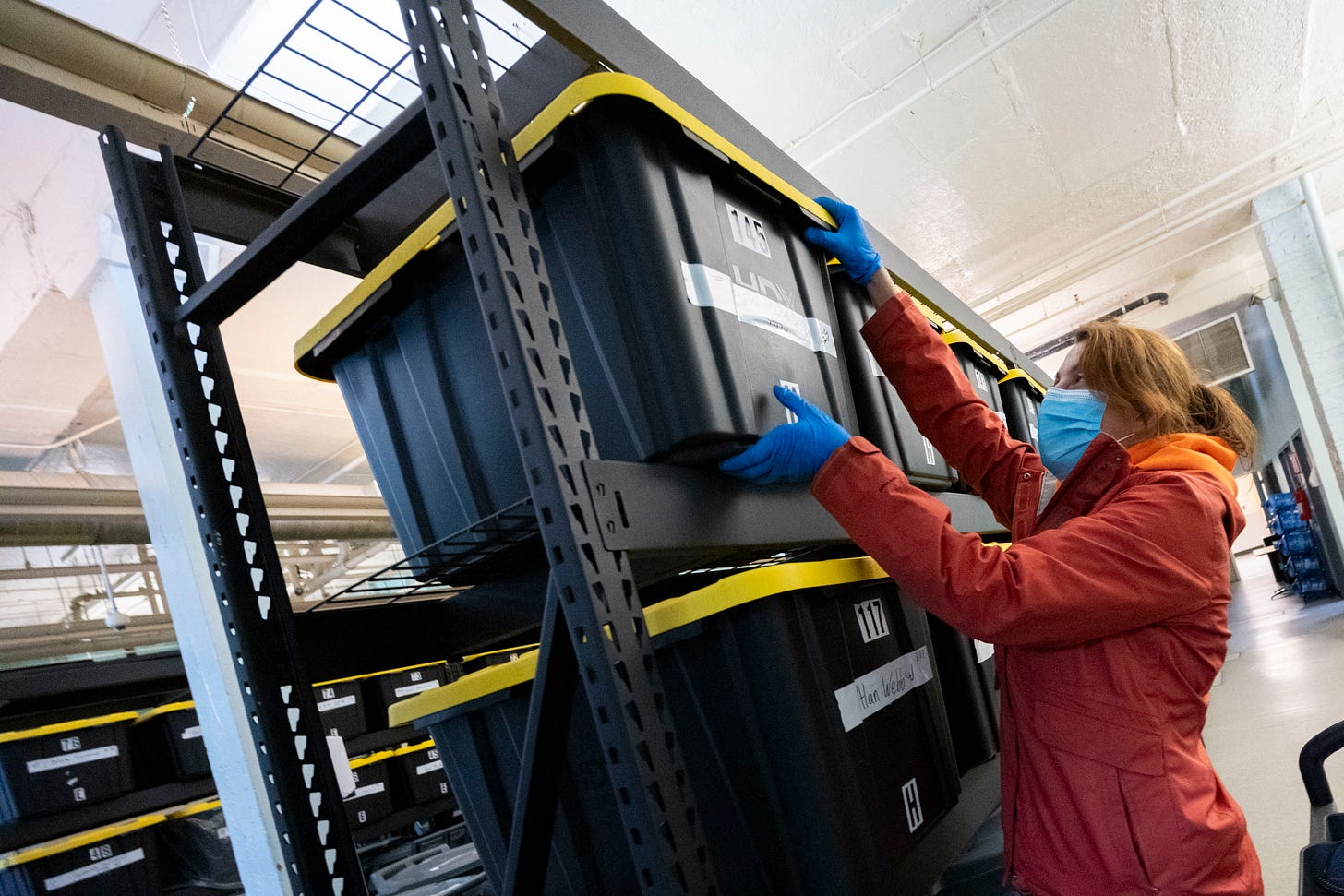
Because he has worked for movers in the past, Gregory Rogers says he is “good at packing.” Rogers started using the Portland Day Storage when it was located in a converted shipping container under the Steel Bridge. He had been unhoused for 15 years, “and then I got housed,” he said. He eventually lost the housing because he explains, “I came down with asthma” and a lung disease.
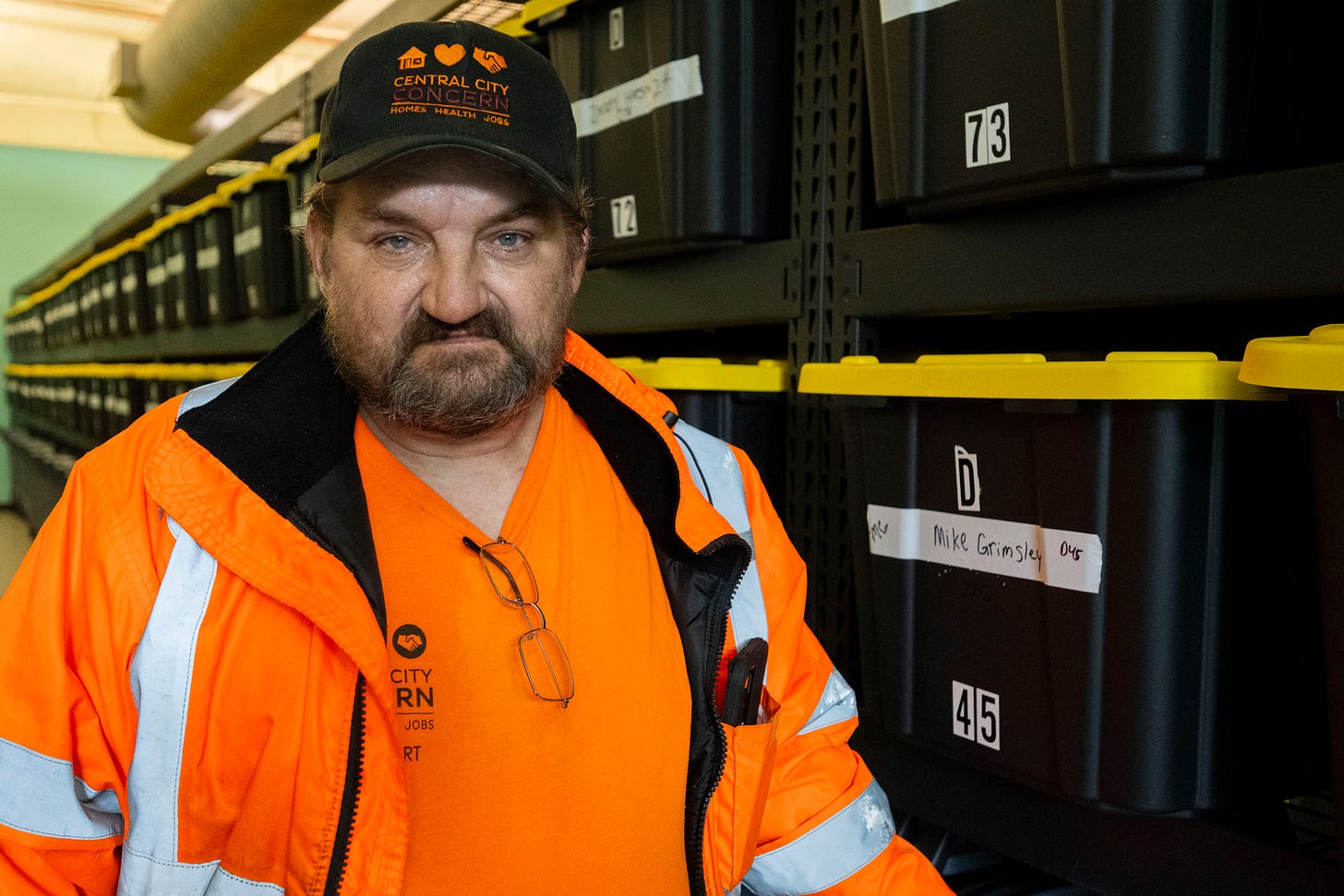
Jessie Fosse had been unhoused for more than 11 years. He has been working at Central City Concern for five years, all of them with the Day Storage Program. All of the employees that Jessie supervises were at one time homeless themselves. Employees must go through training, pass background checks and a drug screening test.
“There are people who are actually coming from like Gresham to use this facility,” Fosse says.
The best part of his job? When clients close their accounts, he said, because it means they’ve transitioned into regular housing and are likely on a good path forward.
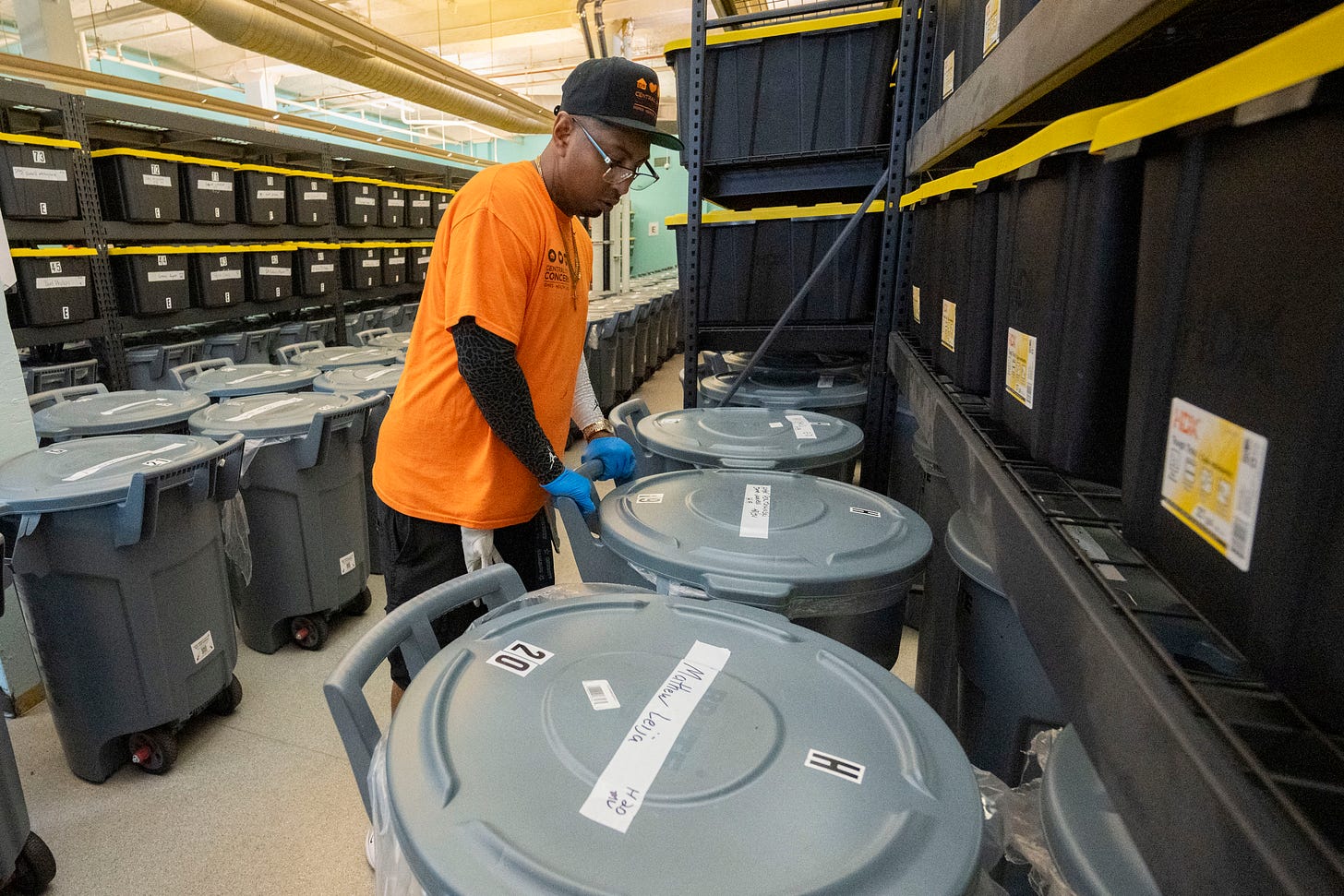
Many Northwest Portland residents say they do not support the more than $15 million Portland Mayor Keith Wilson has allocated for Nighttime Emergency Shelters. Similarly, many say they don’t support the nearly $12 million allocated for a Day Center in each of the council districts.
But most residents are likely unaware that Wilson has also budgeted for a far less costly program that is quietly establishing a track record of success.
Wilson has allocated $864,000 for four more facilities built on the model of Portland Day Storage. One would be sited in each of the city’s four districts. By adding four more facilities like the Day Storage facility on Northwest Glisan, Portland stands to offer a new example of how to meet the pressing needs of people who are homeless — while also reducing the issues of homeless folks’ possessions strewn on the streets.
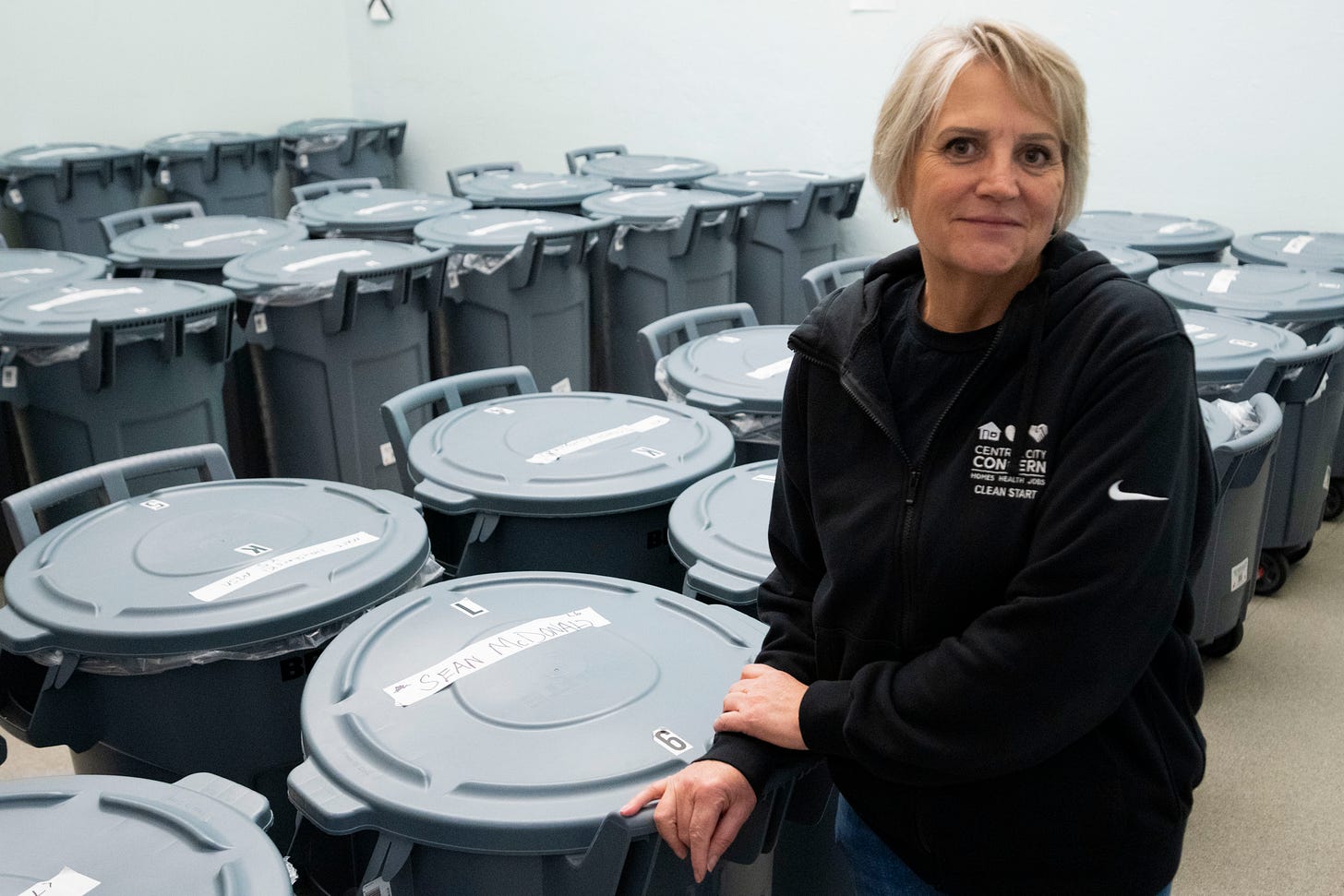
Laura Brown knows what homeless people need and what they want. She was a single teen parent who endured an abusive marriage, lost custody of her son, became addicted to drugs and alcohol, was incarcerated and lived on the streets. All of that informs her world view today. After going through recovery 15 years ago, Brown began working as a street sweeper for Clean and Safe, a precursor of Clean Start. Today, she is boss of this same program and is in charge of 130 employees.
About the program, Laura says, “if they didn’t have somewhere like this to store their stuff, it would be on the street or they would be toting it around. And so this creates safety for them, a feeling that they’ll come in and say, this is my container. This is like home.”




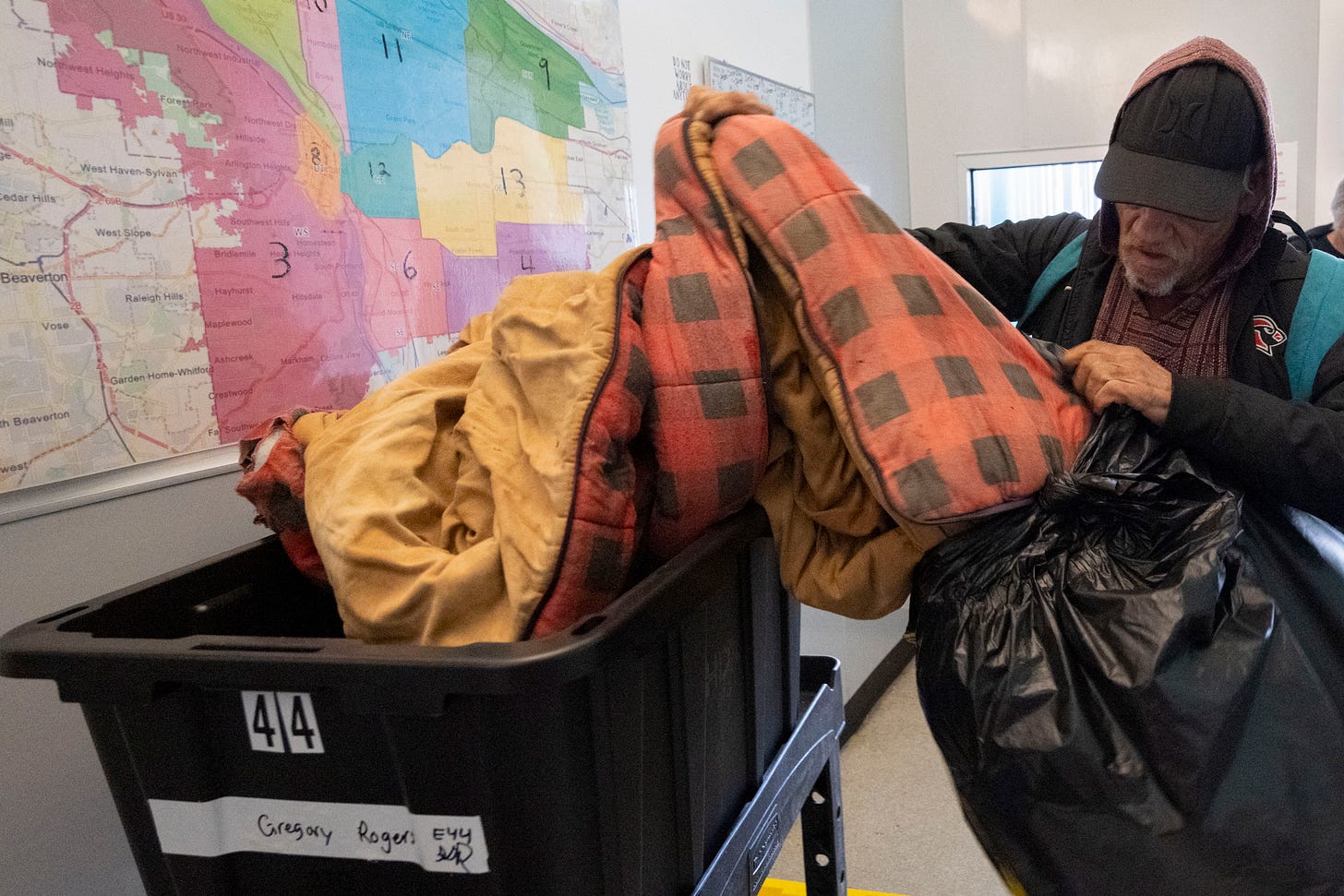

The most comprehensive data on comes from the 2023 Point-in-Time Findings Report: Count of People Experiencing Homelessness in Clackamas, Multnomah, and Washington Counties, Oregon.
Of unsheltered survey respondents in Multnomah County, about 58% became homeless while living in the county. 42% lost housing elsewhere (other Oregon/Washington counties, other states, or abroad).
Portland's higher rate of homeless persons losing housing elsewhere is higher than other west coast cities. It may be higher than other parts of the country, but there is no data
% of Homeless Population Who Became Homeless Outside the Area
City / County % Out-of-Area
Portland (Multnomah) 42%
Seattle / King 27%
Phoenix/Maricopa 31%
Los Angeles 30%
San Francisco 30%
Denver Metro 29%
San Diego 27%
Sacramento 26%
Austin / Travis 24%
San Jose/Santa Clara 23%
Among those who moved to the area while already homeless, the top reasons cited were:
• 40% had family or friends here
• 12% came for jobs
• ~21% cited homeless services, social service availability, or Portland’s progressive reputation
• 33% gave “other” reasons
So, while most respondents pointed to family or jobs, a significant minority explicitly mentioned Portland’s service network and reputation as motivating factors
The source of this information is at https://pdxscholar.library.pdx.edu/cgi/viewcontent.cgi?article=1047&context=hrac_pub.
Scroll to pages 96 and 97 to find the information.
Sounds like a successful and needed resource for Portland …However, one thing stuck out to me….” Donny Collins has been homeless since he arrived in Portland six months ago. He needed a job and a place to live.” Why did Donny come to Portland??How many other people come to Portland, from some place else, just to be homeless. Does Portland attract homeless people from other places ..and why